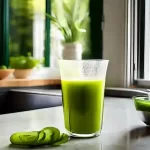Juicing diets and detox have gained popularity in recent years due to their numerous health benefits. They are often used for weight loss, cleansing, and improving overall health. In this comprehensive guide, we will explore the benefits, risks, and types of juicing diets, as well as how to start a juicing diet and incorporate it into your daily routine.
Introduction to Juicing Diets and Detox
Juicing is the process of extracting liquid from fruits and vegetables, leaving behind the pulp. Detoxification, on the other hand, is the process of eliminating toxins from the body. Juicing diets and detox often go hand in hand as juices are an effective way to detoxify the body.
Benefits of Juicing Diets and Detox
Juicing diets and detox have gained popularity due to their numerous health benefits. Here are some of the benefits that you can experience from incorporating juicing into your diet:
- Weight Loss: Juicing diets are low in calories and high in fiber, making them an effective way to lose weight. By replacing high-calorie meals with nutrient-dense juices, you can reduce your calorie intake while still getting all the necessary vitamins and minerals.
- Improved Digestion: Juices contain enzymes that help improve digestion and promote regular bowel movements. This can help alleviate constipation, bloating, and other digestive issues.
- Boosts Immunity: Juices are rich in vitamins and minerals, which help to boost the immune system and protect against diseases. The antioxidants found in juices can also help to fight off harmful bacteria and viruses.
- Reduces Inflammation: Juices contain anti-inflammatory compounds that help reduce inflammation in the body. This can help alleviate symptoms of conditions such as arthritis, asthma, and allergies.
- Enhances Skin Health: Juices are high in antioxidants, which help to fight off free radicals and improve skin health. The vitamins and minerals found in juices can also help to promote healthy hair and nails.
In addition to the above benefits, juicing and detox can also help to reduce stress, increase energy levels, and improve overall health and wellness. By incorporating juicing into your diet, you can take a proactive approach to your health and wellbeing.
Types of Juicing Diets
Juicing diets come in different types, each with its own set of benefits and drawbacks. Here are the different types of juicing diets that you can consider:
- Fruit-Based Juicing Diets: These diets are based on using fruits as the primary ingredient for juicing. Fruits are rich in vitamins, minerals, and antioxidants that can help boost your immune system, improve digestion, and promote healthy skin. However, since fruits are also high in natural sugars, it’s important to balance your fruit-based juices with vegetables to avoid consuming too much sugar.
- Vegetable-Based Juicing Diets: These diets are based on using vegetables as the primary ingredient for juicing. Vegetables are rich in vitamins, minerals, and fiber, making them an excellent choice for improving digestion, reducing inflammation, and supporting healthy weight loss. Vegetable-based juices tend to be lower in sugar than fruit-based juices, making them a great option for those with blood sugar imbalances.
- Combination Juicing Diets: These diets involve using a combination of fruits and vegetables for juicing. This is a great option for those who want to enjoy the benefits of both fruits and vegetables in their diet. Combining fruits and vegetables can provide a variety of nutrients and flavors that can help keep your taste buds happy and your body healthy.
- Juice Cleanses: Juice cleanses are short-term diets that involve consuming only juices for a certain period of time, usually 1-3 days. This is a great option for those who want to give their digestive system a break and jumpstart their weight loss or detoxification goals. However, it’s important to note that juice cleanses should be done in moderation and under the guidance of a healthcare professional to avoid potential nutrient deficiencies and side effects.
By understanding the different types of juicing diets, you can choose the one that best suits your goals and needs. Experiment with different combinations of fruits and vegetables to find the flavors that you enjoy the most and incorporate them into your diet on a regular basis for optimal health benefits.
How to Start Juicing Diets
Starting a juicing diet can be a great way to improve your health, but it’s important to start with the right tools and knowledge. Here are some tips to help you get started:
- Choose the Right Juicer: There are two main types of juicers – centrifugal and masticating. Centrifugal juicers are faster and more affordable but produce lower-quality juice. On the other hand, masticating juicers are slower but produce higher-quality juice with more nutrients and enzymes intact. Consider your budget and needs when choosing a juicer.
- Pick the Right Ingredients: Choosing the right ingredients is key to making delicious and nutritious juices. Opt for fresh, organic fruits and vegetables to ensure that you’re getting the most nutrients from your juice. Some popular ingredients for juicing include kale, spinach, apples, carrots, and ginger. Experiment with different ingredients to find your favorite flavors and combinations.
- Incorporate Juices into Your Diet: Start by incorporating one juice a day into your diet, either as a snack or a replacement for a meal. Gradually increase your intake to two or three juices per day. It’s important to remember that while juicing can be a great way to supplement your diet with extra nutrients, it shouldn’t be used as a replacement for whole fruits and vegetables.
By following these tips, you can start your juicing journey with confidence and ease. Don’t be afraid to experiment with different recipes and ingredients to find what works best for you.
Juicing for Detoxification
Detoxification is the process of eliminating toxins from the body. Juicing can be an effective way to detoxify the body as juices are rich in vitamins and minerals that help to flush out toxins. Some of the best detox juices include lemon, ginger, and beet juice.
Risks and Side Effects of Juicing Diets
While juicing diets and detox can have numerous health benefits, they can also have some risks and side effects, including:
- Nutrient Deficiencies: Juicing can lead to nutrient deficiencies, especially if it is done for an extended period of time.
- Blood Sugar Imbalances: Juicing can cause blood sugar imbalances, especially if the juices are high in fruit.
- Gastrointestinal Issues: Juicing can cause gastrointestinal issues, including bloating, gas, and diarrhea.
- Potential Harmful Interactions: Juicing can interact with certain medications, so it’s important to consult with your doctor before starting a juicing diet.
Juicing Diets and Detox FAQs
- Can I continue taking medications while on a juice cleanse? Yes, you can continue taking medications while on a juice cleanse, but it’s important to consult with your doctor first.
- How often should I do a juice cleanse? It’s recommended to do a juice cleanse 1-2 times per year, for 1-3 days at a time.
- Can I juice fast for weight loss? Yes, you can juice fast for weight loss, but it’s important to do it in moderation and under the guidance of a healthcare professional.
- Can juicing cause kidney stones? Yes, juicing can increase the risk of developing kidney stones, especially if the juices are high in oxalates.
- Can juicing help with constipation? Yes, juicing can help with constipation, especially if the juices are high in fiber.
Conclusion
Juicing diets and detox can be a great way to improve your health, but it’s important to do it in moderation and under the guidance of a healthcare professional. By following the steps outlined in this guide, you can start incorporating juicing into your diet and reap the numerous benefits it has to offer.
References:
“The Ultimate Guide to Juicing for Beginners” by Emily Palmer, – Reference
“Benefits of Juicing: Separating Fact from Fiction” by Rachael Link, MS, RD, – Reference
“Juice Fasting: A Guide for Beginners” by Jillian Kubala, MS, RD, – Reference
“The Risks and Benefits of Juicing” by Alina Petre, MS, RD, – Reference
“10 Delicious Juicing Recipes for Cleansing and Detox” by Jillian Kubala, MS, RD, – Reference







